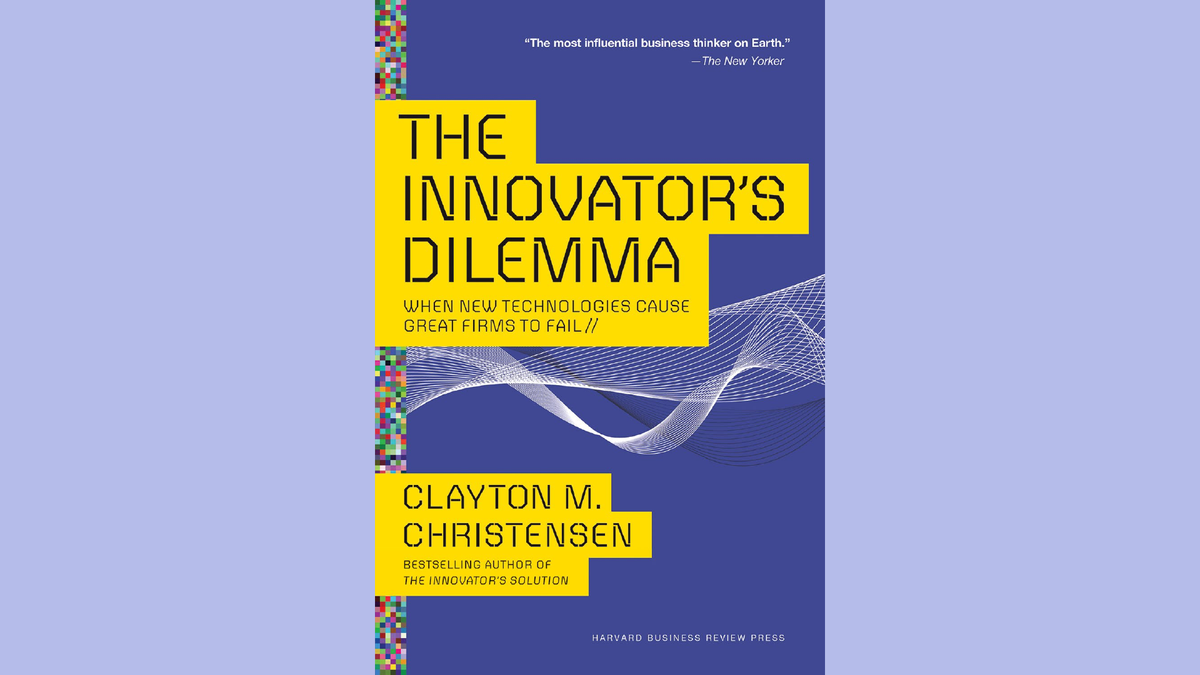Apple's Q2 2024 Earnings Breakdown: Key Takeaways for Entrepreneurs
Explore Apple's Q2 2024 financial highlights and strategic insights in our latest blog. Learn how Apple's diversification and innovative approaches are shaping its future.

Apple's latest earnings report for Q2 2024 not only surpassed Wall Street expectations but also showcased strategic insights that entrepreneurs can leverage. With significant figures and bold moves, Apple continues to redefine success in the tech landscape. Facing the classic "Innovator's Dilemma," Apple must decide whether it can sustain its growth with its current iPhone and Services strategy or if it needs to disrupt itself with a new product. Here’s an in-depth analysis of what this means for you as an entrepreneur.
Financial Highlights
Surpassing Expectations
- Revenue: Apple reported a robust revenue of $90.75 billion, eclipsing the expected $90.33 billion. This slight overperformance signals strong market demand despite global economic uncertainties.
- Earnings Per Share (EPS): At $1.53 per share, Apple’s earnings beat projections by $0.03, reflecting efficient operational management and profitability.
Diverse Growth Drivers
- Sector Analysis: Although iPhone sales saw a 10% decline year-over-year, areas like Mac, Services, and operations in Greater China outstripped expectations. This diversity reduces risk and allows for stable growth across different market conditions.
Rewarding Shareholders
- Share Buyback and Dividend: Apple’s announcement of a new $110 billion share buyback plan, coupled with an increased quarterly dividend of $0.25 per share, illustrates its commitment to returning value to its shareholders. This also indicates strong cash flow management—an essential lesson for all businesses.
Operational Excellence
- Gross Margin: A gross margin of 46.6%—unseen in decades—despite rising commodity costs, highlights Apple’s ability to manage expenses and optimize pricing strategies effectively.
Strategic Initiatives
Record-Setting Performance
- Services Revenue: The Services segment not only hit an all-time high but also grew due to an increase in paid subscriptions. This pivot towards recurring revenue streams is a critical strategy in today’s volatile market.
Market Expansion
- Active Device Installation: The total installed base of active Apple devices has now surpassed 2.2 billion, signifying a broad and deep market penetration. The ongoing expansion into new demographics provides a playbook for scaling your business.
Policy Adaptation
- European Market: Significant changes to the App Store policies in Europe, such as alternative billing options and enhanced NFC capabilities, demonstrate Apple’s adaptability to regulatory environments and market demands.
Entrepreneurial Insights
Resilience Through Diversification
Apple’s ability to thrive even with a significant drop in iPhone sales is a testament to its diversified portfolio. Entrepreneurs should note the importance of not relying solely on a single product line or market segment.
Focus on Recurring Revenue
The growth in Apple’s Services segment underscores the value of building and enhancing recurring revenue models, such as subscriptions. These models can provide stability and predictability in revenue, which is crucial for long-term planning.
Strategic Shareholder Returns
Apple’s proactive shareholder return strategy through buybacks and dividends highlights the importance of maintaining a strong relationship with investors. This approach can be crucial for startups seeking to attract and retain confident investors.
Global Adaptation
Apple’s modifications to its European operations reflect its strategy to adapt locally while operating globally. Entrepreneurs should consider how global trends and local regulations can impact their business strategies.
Leveraging Technology Trends
Finally, Apple’s continual investment in emerging technologies and its ability to integrate them into its ecosystem offers a roadmap for leveraging tech trends. As an entrepreneur, staying ahead in technology adoption can provide a competitive edge.

SWOT Analysis
Strengths:
- Diversified Product and Service Portfolio: Strong across multiple product lines and services.
- Brand Recognition and Loyalty: High customer loyalty and brand value.
- Financial Health: Strong profitability and cash reserves.
- Innovation and Ecosystem Expansion: Continuous innovation and expanding ecosystem of devices and services.
Weaknesses:
- Heavy Reliance on iPhone Sales: Significant dependence on the revenue from iPhone sales.
- Market Saturation: Challenges in growing in saturated markets.
- Supply Chain Vulnerabilities: Exposed to global supply chain disruptions.
Opportunities:
- New Product Categories: Potential for significant growth in new and emerging tech sectors.
- Services Expansion: Increasing the scope and scale of service offerings.
- Technological Advancements: Leading the adoption of 5G, AI, and other technologies.
- Regulatory Changes: Opportunities to capitalize on changes in regulations, particularly in international markets.
Threats:
- Competitive Pressure: Increasing competition in all areas of business.
- Regulatory Challenges: Potential for unfavorable regulatory changes.
- Global Economic Uncertainty: Risks associated with international trade and economic conditions.
- Technology Disruption: Risk of disruptive technologies undercutting existing product lines.

Conclusion
Can Apple continue to rely on its iPhone and Services to sustain growth, or does it need to introduce a groundbreaking new product to stay ahead? As highlighted by the "Innovator's Dilemma," even successful companies must continually evolve and sometimes disrupt their own successful business models to remain competitive. Apple’s Q2 2024 financial results are not just numbers but narratives of strategic foresight, resilience, and innovative prowess. For entrepreneurs, these insights provide valuable lessons in financial management, strategic diversification, investor relations, and market adaptation. By observing and integrating these strategies, startups can navigate their paths to success more effectively.

Innovator's Dilemma
The "Innovator's Dilemma" is a concept popularized by Clayton M. Christensen in his 1997 book of the same name. It describes a situation where successful companies face a significant challenge: continuing to focus on current technologies and business practices that have brought them success (and satisfy current customers' demands) or investing in new, potentially disruptive technologies that initially might not meet the needs of their main customers or provide immediate financial returns.
The dilemma occurs because new technologies can start off as less effective or more expensive than existing solutions, making them unattractive to mainstream customers. However, these new technologies can improve rapidly and begin to appeal to a broader audience, potentially overtaking established solutions in both performance and cost-effectiveness. Companies that fail to invest in these emerging technologies early may find themselves overtaken by competitors who do.
Here are key points illustrating the Innovator's Dilemma:
- Market Leadership and Complacency: Successful companies might be too focused on current profit margins and customer demands to risk investing in new, unproven technologies.
- Disruptive Technologies: These are innovations that create new markets by providing different attributes than existing technologies and typically are cheaper, simpler, smaller, and, frequently, more convenient to use.
- Customer Base Shift: Disruptive technologies initially find footholds in small or new markets but eventually evolve to meet the needs of more demanding customers, capturing larger market segments and displacing established products.
- Strategic Response: Companies often struggle to respond to disruptive technologies because doing so may involve cannibalizing their own products, changing their business model, or reallocating resources away from their most profitable segments.
The dilemma poses a crucial question for any business leader: how to innovate without neglecting current business but also not getting left behind as industry paradigms shift. The key is often to recognize the potential of new technologies early and to find ways to integrate them into their growth strategy without alienating current customers.


